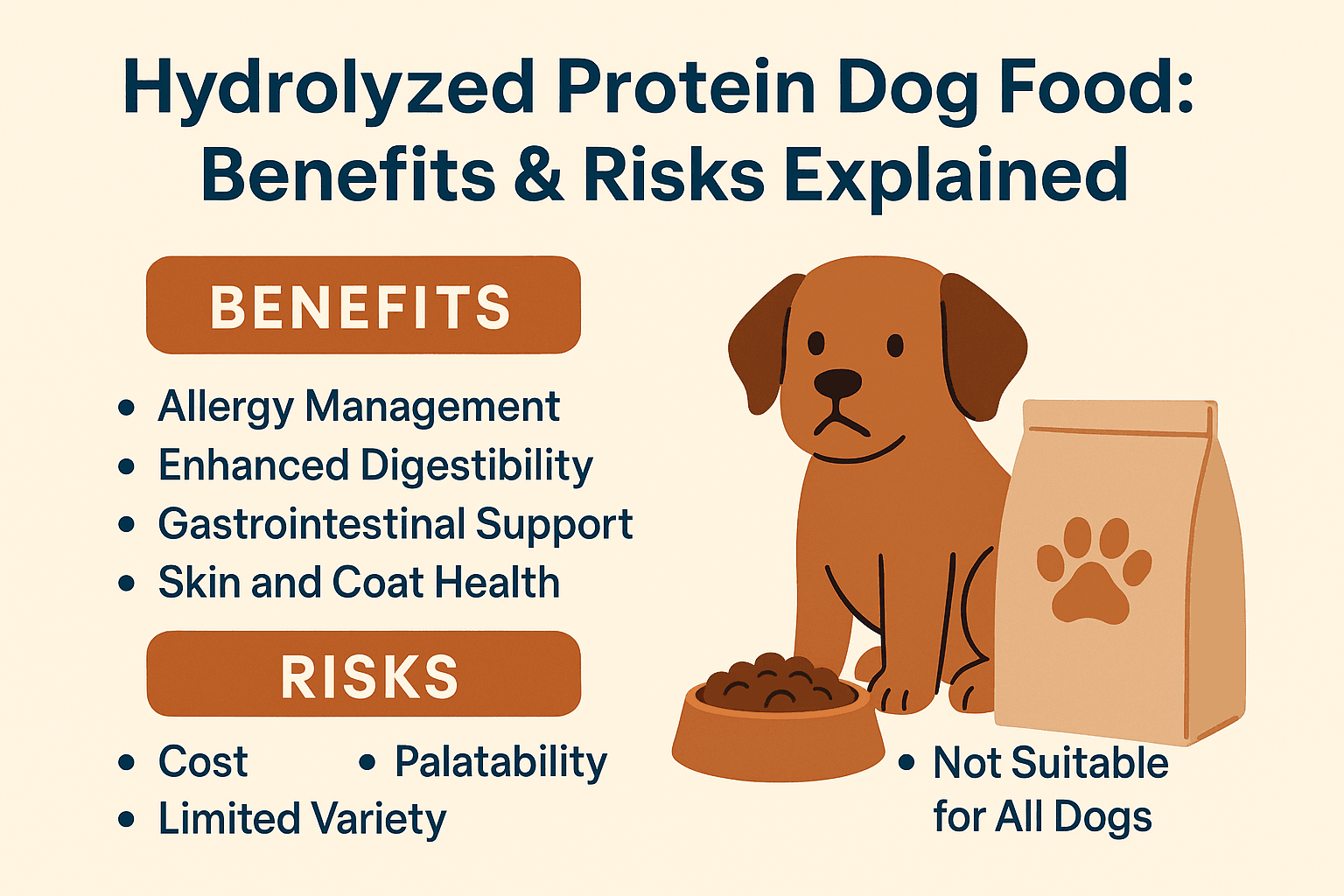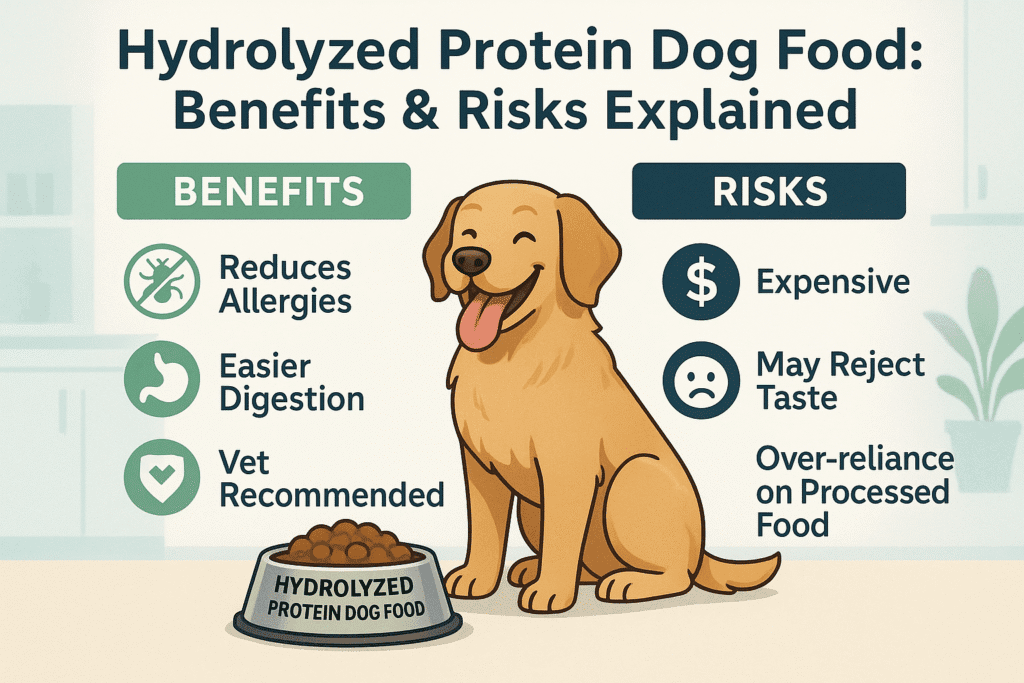Hydrolyzed Protein Dog Food: Benefits & Risks Explained

For those caring for a four-legged friend dealing with allergy troubles or a sensitive tummy, a specialized diet made with simplified proteins could be just what’s needed. This approach involves breaking those proteins down into smaller bits, making them less likely to stir up unwanted reactions. In this easy-to-follow guide, we’ll explore how this kind of nutrition works, its upsides, a few possible downsides, and smart tips for making it part of your companion’s mealtime routine.
Understanding Hydrolyzed Protein
It refers to proteins that have been broken down into much smaller components through a special process involving enzymes or chemicals. This breakdown makes it less likely for the body’s immune system to identify it as a threat, which is especially helpful for those dealing with dietary sensitivities. It also becomes easier on the stomach, promoting smoother digestion and better absorption of nutrients overall.
Benefits of Hydrolyzed Protein Dog Food
1. Allergy Management
These specially processed proteins are less likely to cause allergic flare-ups because their reduced size makes them harder for the immune system to detect. This can be especially helpful for those with known sensitivities or past reactions.
2. Enhanced Digestibility
The smaller protein pieces in hydrolyzed meals are simpler for them to break down and take in, supporting better nutrient absorption and less digestive stress.
3. Gastrointestinal Support
Pets with sensitive stomachs may benefit from hydrolyzed meals, as these are easier to digest and can reduce discomfort.
4. Skin and Coat Health
If your furry friend struggles with itchy skin caused by mealtime sensitivities, switching up their daily meals to something gentler can ease the irritation—leaving their coat shinier and their skin feeling a whole lot better.
5. Consistent Gut Flora
A diet that’s gentle on the stomach can support a more stable and harmonious gut microbiome, which is essential for well-being, proper digestion, and a strong immune response.
Potential Drawbacks
1. Cost
These specialized blends tend to cost more than regular options because of the extra processing involved in breaking down the ingredients.
2. Palatability
Some may find the taste of these specialized meals less appealing, making it a bit tricky to adjust during the switch.
3. Limited Variety
Compared to regular meals, the selection available in this category tends to be more limited, which could be a downside for those who enjoy a bit more variety in what they eat.
4. Not Suitable for All Dogs
These meals are tailored for pets with specific dietary requirements. Sharing them with animals that don’t have those needs probably won’t provide extra benefits and could be unnecessary.

Veterinary Recommendations
Veterinarians usually recommend this special kind of diet to address issues such as chronic allergies or digestive inflammation. It’s commonly introduced during elimination trials to help pinpoint what specific ingredients might be causing the reaction.
Conclusion
This tailored nutrition plan can be a great option for addressing specific concerns, particularly allergies and stomach sensitivities. Although it might come with drawbacks like a steeper cost or picky eaters, the benefits for those with these challenges can be significant. Consulting a veterinarian is wise to determine the right choice for their individual situation.
FAQ's
1. How does a hydrolyzed protein diet differ from one with novel proteins?
Answer:
A hydrolyzed protein diet contains proteins broken into tiny fragments, making them less likely to cause immune reactions. In contrast, novel protein diets rely on whole proteins from uncommon sources (like kangaroo or duck) that the animal hasn’t encountered before. The latter works by avoiding prior exposure, while the former alters the protein structure to minimize reactions. Hydrolyzed options are typically chosen when novel proteins aren’t effective or sensitivities are severe.
2. Is this type of diet appropriate for growing animals?
Answer:
Young animals can follow this diet under veterinary supervision. These formulas are designed for specific dietary needs and may not provide complete nutrition for growth unless specifically adjusted for their life stage. Using them without medical necessity could limit essential nutrients during development.
3. Can this diet be used long-term?
Answer:
Yes, if recommended by a vet, these diets are formulated for extended use. They provide balanced nutrition, making them a sustainable choice for ongoing dietary concerns. Regular monitoring ensures proper weight and nutrient intake.
4. How are the proteins processed during manufacturing?
Answer:
Proteins are broken down using enzymes or chemical treatments. Enzymes mimic natural digestion, while chemical methods use controlled reactions to split proteins into smaller, less reactive fragments.
5. Does this diet help with other conditions besides food reactions?
Answer:
Yes, it can support digestive disorders, certain skin conditions, and other immune-related issues. By minimizing irritation and improving nutrient absorption, it may enhance overall comfort in chronic cases.
6. What’s the best way to transition to this diet?
Answer:
Switch gradually over 7–10 days to avoid digestive upset. Start with 25% new food mixed with 75% of the previous diet, slowly increasing the new portion. Observe for any adverse effects and consult a vet before making changes.
7. Can this diet be made at home?
Answer:
No, the required processing involves specialized equipment and precise techniques. Homemade versions won’t achieve the same benefits and may lead to nutritional imbalances.
8. Does this diet assist with weight management?
Answer:
While not its primary purpose, it may indirectly help by reducing digestive issues that affect metabolism. For targeted weight control, a calorie-specific plan is more effective—always seek veterinary advice.
Related posts:
- Cat Insulin Cost: How to Save Money in America and Canada
- A Journey of Love: Choosing Not to Treat Feline Diabetes
- Yo, Check Out How We Treat Copper Storage Disease in Dogs!
- Feline Diabetes Mastery: Expert Guide to Cat Insulin Care
- Decoding Red Eyes in Dogs: Could It Be Cancer?
- Exploring Dr. Marty Dog Food on Amazon
- Pawsitive Health: Your Ultimate Cat Diabetes Test Kit Guide
- Dr. Marty Dog Food: Unveiling Complaints
- Blue Buffalo Puppy Food Reviews: Real Talk from a Dog Parent
- Problems with Orijen Dog Food: What Every Dog Owner Should Know